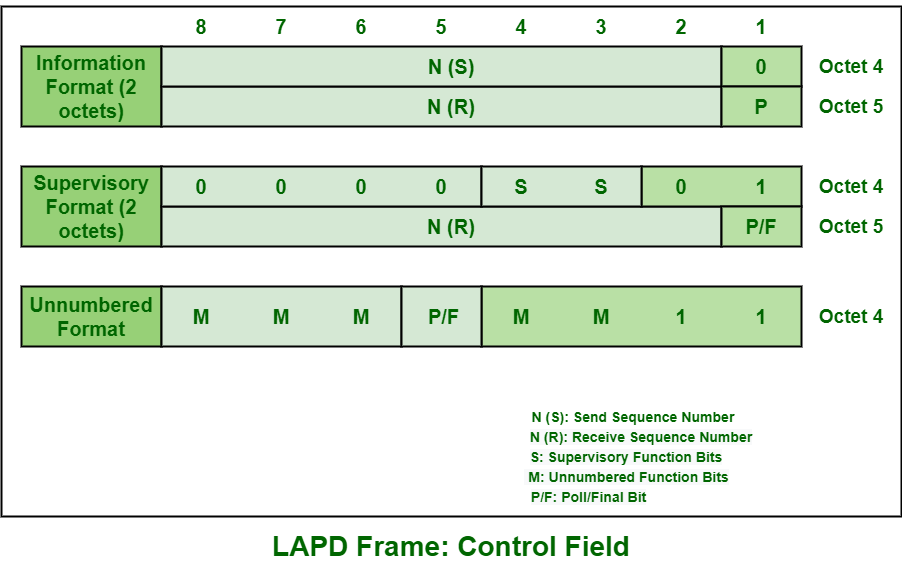Link Access Protocol D-channel (LAPD)
Last Updated :
22 Dec, 2022
LAPD or Link Access Protocol on D channel is basically Layer 2 protocol usually required on ISDN D channel. It is being derived from Link Access Protocol Balanced (LAPB) protocol. It was specially designed and developed to simply satisfy the signaling requirements of ISDN basic access. The main objective of LAPD is simply to provide a secure, error-free connection among two end-points just to reliably transport messages or data frames of Layer 3. D channel is generally a data or signaling channel that is required for communications among switching equipment in ISDN Network and ISDN Equipment at your site. It basically supports two different types of operations i.e., Acknowledged and Unacknowledged Operation.
- Acknowledged Operation – In this operation, information or data transfer might be done either with single frame transmission or with multiple frame transmission.
- Unacknowledged Operation – This operation basically requires an unnumbered information frame.
Frame Structure: LAPD has basically data link layer frame structure. It contains the following field as follows:
Flag Field: Start and End Flags are simply present at extreme ends just to identify that starting and ending of message or data frame. These are also known as opening and closing flags that are used for synchronization. Bit pattern of these fields is 01111110. This is unique pattern that should not be present in between these start and end flag field. For this prevention, bit stuffing is especially required.
Address Field: This field is divided into two main Identifiers field i.e. Service Access Point Identifier (SAPI) and Terminal End Point Identifier (TEI). The logical links among various functional entities are identified as functional addresses i.e., SAPI. The signaling links over A-bis interface are simply addressed to various units simply by TEI.
Control Field: This field is generally used to determine type of LAPD Frame that is being transferred or transmitted as well as having sequence numbers for acknowledged information transfer service. This field specifically identifies type of message or frame being transferred. It can be of three types i.e., I-frame (Information frame), S-frame (Supervisory frame), and U-frame (Unnumbered-frame). 
Frame Check Sequence (FCS) Field : This field is generally checksum of all of the elements of the LAPD frame except flags and the FCS field. It also provides detections by receiver of any type of errors that might have arisen or occurred during frame transmission.
LAPD Functions:
- Framing – Framing simply provide beginning of signal and end of transmission delimit user data within frame.
- Addressing – Addressing is simply required to indicate which of device is transmitter and receiver.
- Sequencing – Sequencing is simply required to maintain and handle sequence numbering of data being transferred or transmitted.
Like Article
Suggest improvement
Share your thoughts in the comments
Please Login to comment...